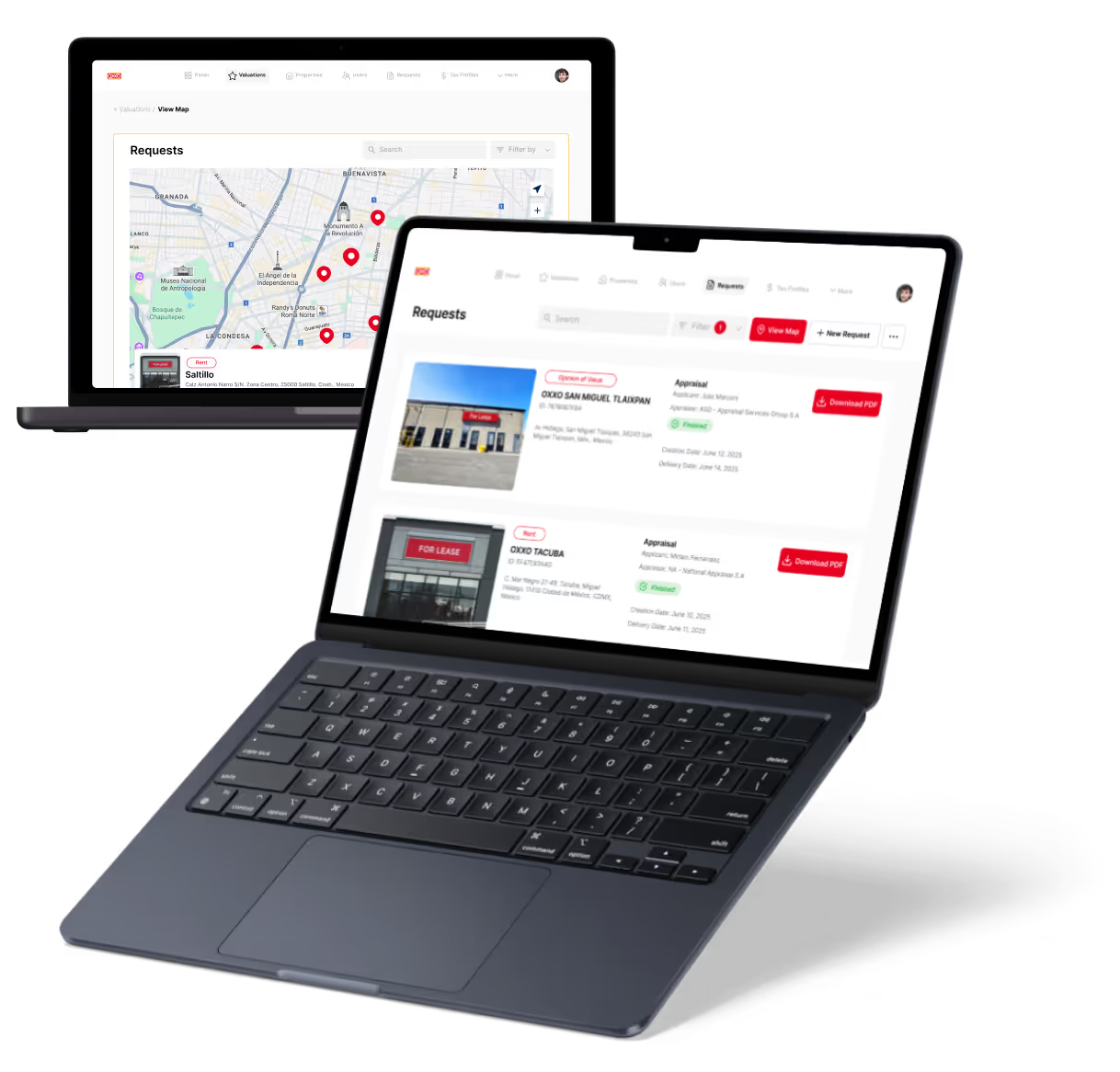Webflow vs Duda | 9 Factors to Decide the Best One
13 min
read
Compare Webflow vs Duda across 8 key areas like design, CMS, SEO, and client tools to find the best website builder for freelancers or agency work

Webflow powers over 3.5 million websites and is known for full design freedom and developer-level control, without writing code. Duda, trusted by over 20,000 agencies, is built for speed and scale, letting teams launch client sites fast with white-label features.
While Webflow is made for designers and creative control, Duda is focused on agencies, templates, and automation. In this guide, we’ll compare them across eight key areas like design, CMS, SEO, and client collaboration—so you can pick the platform that fits your workflow best.
Quick Comparison Table - Webflow vs Duda
1. What’s the core difference between Webflow vs Duda?
The core difference between Webflow and Duda is who they’re built for.
Webflow is made for designers and developers who want full control over a site’s layout, animations, and code-like styling—without writing code. It offers a visual editor with deep customization, ideal for creating highly custom websites and landing pages.
Duda, on the other hand, is made for agencies and freelancers who need to build lots of websites quickly. It focuses on speed, team collaboration, and white-label tools. Duda has pre-built widgets, simple drag-and-drop editing, and features like client permissions and automated site updates.
So if you want full creative control and advanced design freedom, go with Webflow. If you need to build and manage websites for clients quickly and at scale, Duda is better suited for your workflow.
2. Ease of use and learning curve
Let’s begin with how easy each platform is for beginners and teams.
Is Webflow easy for non-coders to learn?
Webflow is powerful but has a steeper learning curve. It’s built for designers who want to control every detail, including layout, animations, and CSS-style settings. While it’s no-code, the interface can feel technical at first. Beginners may take time to understand Webflow’s box model and class-based system.
However, Webflow University provides great free tutorials and lessons to speed up learning. Once you get used to it, you can build professional websites without writing code. Webflow is ideal for creatives who are ready to learn and grow into the tool.
Is Duda beginner-friendly for fast onboarding?
Yes, Duda is easier to learn right away. It uses a simple drag-and-drop interface and provides ready-made templates that make site creation fast. Agencies and freelancers can use preset widgets and layouts without worrying about technical details. The platform is built for speed—both in setup and in production.
You don’t need coding knowledge to create or manage sites. It also includes tutorials and real-time support to guide new users. If you want to launch sites quickly without learning complex design systems, Duda is a great pick.
Read more about:
3. Design flexibility and customization
Next, let’s compare how much creative control each platform gives you.
How much creative control does Webflow offer?
Webflow gives you full design freedom. You can control every part of the layout using a visual interface that mirrors CSS styling. You’re not locked into templates—you can build designs from scratch, add animations, manage breakpoints, and even insert custom code.
This makes Webflow ideal for creating custom landing pages, marketing websites, or interactive portfolios. Designers love how it gives pixel-level control without needing to code. It’s more complex than traditional builders, but it rewards creativity with powerful output.
How customizable are Duda’s templates and layouts?
Duda offers strong customization with a focus on speed. You start with a template and can drag-and-drop prebuilt sections like forms, images, videos, and testimonials. You can edit styles, adjust layouts, and even add custom code widgets.
While it’s not as flexible as Webflow for unique designs, Duda is great for creating polished websites fast. Most customization happens within the structure of the template, which makes it easy to stay consistent. It’s a smart choice for teams who want clean design with less effort.
Read more about:
4. CMS and content management
Now let’s explore how each tool manages content on dynamic websites.
How does Webflow manage dynamic content?
Webflow includes a powerful built-in CMS for managing dynamic content. You can create custom content types—like blog posts, team profiles, or product lists—and design how each type displays. It’s easy to update content through the Webflow Editor without touching the layout.
You can also connect data to dynamic pages, loops, and filters. For content teams or bloggers, Webflow’s CMS gives both structure and flexibility. It’s ideal for sites that need unique layouts for different content types and want full control over design.
Is Duda’s CMS suitable for multi-page and client sites?
Yes, Duda has a flexible CMS that works well for multi-page sites and client work. You can create structured content using collections, repeaters, and dynamic pages. It’s designed to help agencies build templates that reuse data across multiple sites.
Clients can edit only the content without affecting design. Duda also supports external data sources like Google Sheets or Airtable. It’s not as advanced as Webflow in design control, but for managing large batches of content or multiple websites, it’s fast and user-friendly.
5. Mobile optimization and performance
Let’s see how well each platform handles mobile responsiveness and speed.
Is Webflow good for responsive mobile design?
Yes, Webflow gives full control over responsive design. You can adjust how your site looks on desktop, tablet, and mobile screens using visual breakpoints. It also lets you hide or show elements based on screen size. This means you can design mobile-specific experiences if needed.
Webflow also outputs clean, fast-loading code, which helps with performance. However, it requires manual setup for responsiveness. It’s great for designers who want precision and are okay spending time to perfect each screen layout.
Does Duda optimize sites automatically for mobile and speed?
Yes, Duda is built with mobile optimization in mind. All templates are fully responsive by default, and the platform handles layout adjustments automatically. You can still tweak mobile views manually, but you won’t need to rebuild sections for different devices.
Duda also offers built-in performance tools like lazy loading, global CDN, and image optimization. It scores high on Core Web Vitals out of the box. If you need a fast website that looks good on any screen with little extra work, Duda delivers well.
6. SEO tools and features
Now let’s compare what each platform offers to help your site rank on Google.
What SEO options does Webflow provide?
Webflow includes all the modern SEO tools needed to rank well. You can set custom meta titles, descriptions, alt text, and canonical tags for each page. It supports clean URLs, 301 redirects, Open Graph settings, and automatic sitemaps.
You also have control over page structure and performance, which helps SEO. With fast-loading pages, built-in SSL, and control over HTML tags, Webflow is great for marketers and SEO specialists who want to fine-tune every page for better visibility.
How does Duda simplify SEO for users?
Duda simplifies SEO by handling the technical parts for you. Each template is mobile-optimized, secure, and loads fast—all key factors for SEO. You can set meta titles, descriptions, image alt text, and URL slugs for each page. It also generates sitemaps and supports Google Analytics and Tag Manager.
Unlike Webflow, Duda doesn’t focus on deep customization, but it’s perfect for users who want good SEO without extra effort. For most small businesses and agency-built sites, the built-in SEO tools are more than enough.
Read more about:
7. Client collaboration and team management
Let’s look at how each platform supports teams and client work.
Can Webflow be used for team-based projects?
Yes, Webflow supports team collaboration through its Team and Workspace plans. You can invite teammates, assign roles, and use version control to manage projects together. Designers can work on different pages while editors update content safely.
Webflow also includes a client editor view, which makes it easy for clients to update content without touching design. While not as client-focused as Duda, Webflow still works well for agencies or freelance teams managing a few client sites.
Does Duda support client portals and white-label workflows?
Yes, Duda is built for agencies and client work. It includes white-label portals where your clients can log in, update their content, and see site changes without seeing the Duda brand. You can also control what each client can edit—content only, or full sections.
Team members can collaborate with role-based access. Duda even offers client management tools like invoicing, site duplication, and asset libraries. If you manage multiple clients, Duda is one of the best no-code platforms for agency workflows.
8. Support and customer service
Finally, let’s compare the kind of help and support each platform offers.
What type of support does Webflow offer?
Webflow offers email-based support and an extensive library of tutorials through Webflow University. While the help center is rich in content, live chat or phone support isn’t available on most plans. The Webflow community forum is also active and helpful.
For technical or urgent needs, response times may vary. It’s best for users who prefer learning through video guides and self-help content. Teams on higher-tier plans get faster support responses, but overall, Webflow relies more on documentation than live help.
Does Duda provide real-time support for agencies?
Yes, Duda offers real-time support options, especially for agency plans. You can reach support via live chat or email, and higher-tier plans get access to phone support. Duda also provides onboarding help, webinars, and a resource library for agencies.
The platform is built to help teams launch and manage many websites, so support is quick and responsive. If fast help and guided support are important for your workflow, Duda makes sure agencies don’t get stuck waiting for answers.
Read more about:
9. Final verdict – Webflow or Duda?
Let’s wrap up by helping you choose the right platform based on your goals and workflow.
When to choose Webflow over Duda
Choose Webflow if you want full creative freedom and precise design control. It’s the best choice for designers, freelancers, and developers who want to build custom layouts, animations, or marketing pages without limits. Webflow also shines if SEO is a top priority or if you need a fully tailored CMS structure.
While it takes more time to learn, the results look and feel professional. If you’re building fewer but more advanced websites where design and brand identity matter most, Webflow gives you the tools to stand out without writing code.
When to choose Duda over Webflow
Pick Duda if you’re an agency, freelancer, or team managing many websites. It’s designed for speed, scale, and collaboration. With ready-to-use templates, drag-and-drop building, and white-label features, Duda helps you launch and manage client sites quickly.
You can set up portals, assign roles, and limit client access safely. It also includes built-in SEO, mobile optimization, and support for e-commerce. If your focus is delivering good-looking sites efficiently—with less time spent on design or development—Duda makes the process smooth, reliable, and scalable for agency workflows.
Created on
July 2, 2025
. Last updated on
December 11, 2025
.

FAQs
Is Webflow good for agency use?
Can Duda handle custom designs?
Does Duda support e-commerce?
Is Webflow better for SEO?
Which platform is easier for beginners?
Can I white-label Webflow for clients?







%20(Custom).avif)








